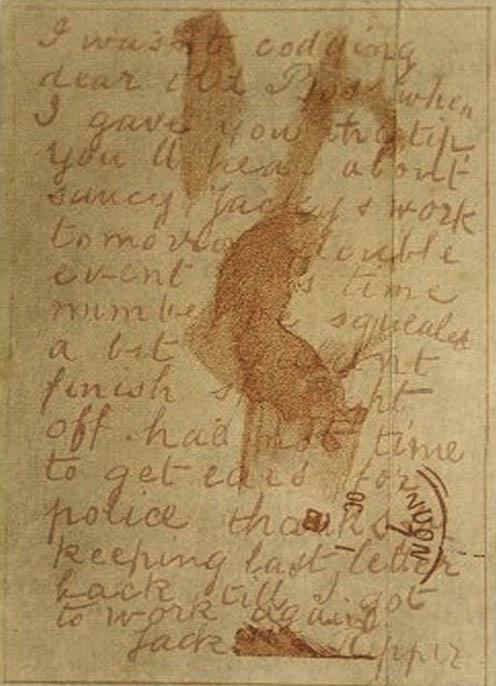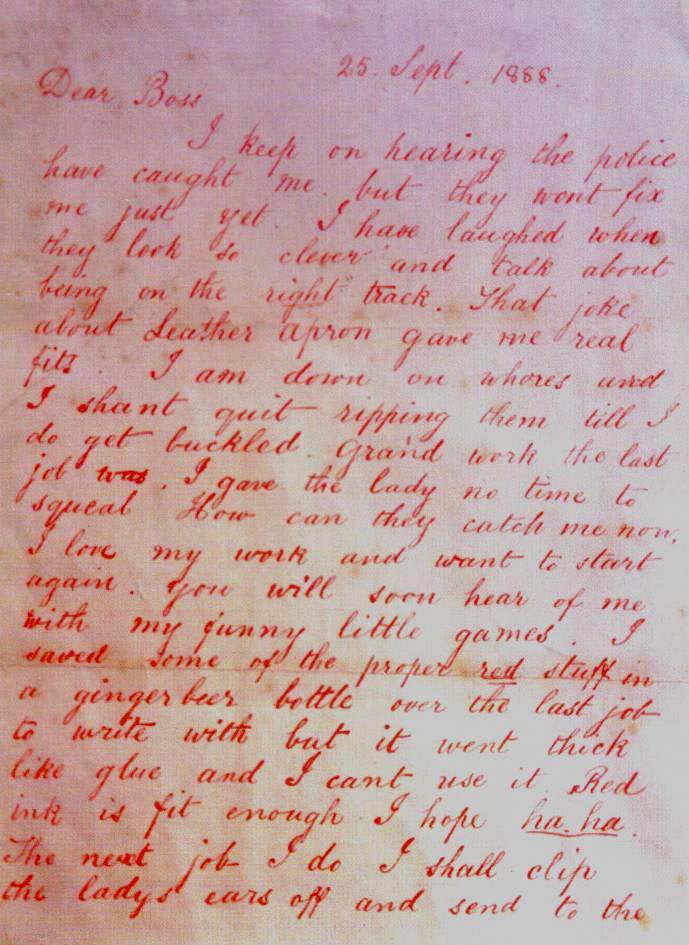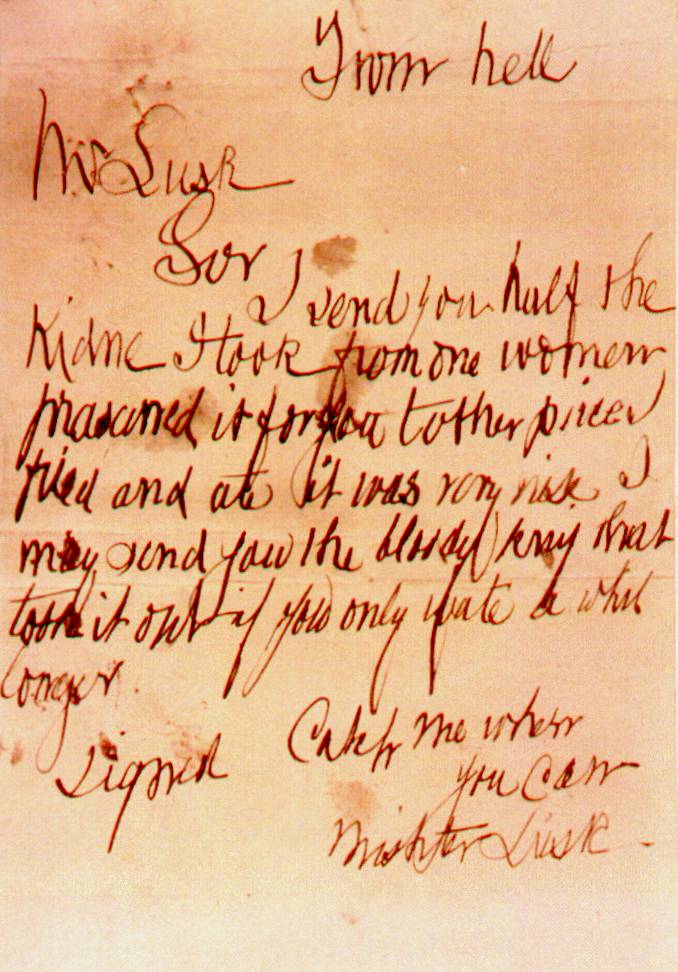Jack the Ripper remains one of the most infamous and elusive serial killers in history. Over a century has passed since his violent crimes terrorized the streets of London’s Whitechapel district, and yet, the true identity of this sinister figure continues to elude us. Throughout the years, numerous suspects have come to light, as experts and amateur sleuths alike attempt to piece together the puzzle of this enduring mystery.

Sifting through the various theories and speculations surrounding the Ripper’s identity can be a daunting task. However, we’ve taken the time to delve into the numerous suspects that have emerged over the years in order to provide an insight into some of the more compelling arguments. From the highly plausible to the downright outlandish, we’ll take a closer look at the key players in this unsolved case.
While we may never know with absolute certainty who Jack the Ripper truly was, exploring the most viable suspects allows us to gain a deeper understanding of the case as a whole. As we examine the backgrounds and motives of these individuals, we hope to shed light on the chilling series of events that occurred in 1888 and the shadowy figure who perpetrated these heinous crimes. And who knows, perhaps someday we’ll finally unmask the true identity of the infamous Jack the Ripper.
Jack the Ripper Suspects: History and Profiles
Let’s delve into the enormous intrigue surrounding Jack the Ripper suspects. As passionate enthusiasts of cold cases and mystery, we know how this infamous figure continues to captivate us. Throughout history, numerous suspects have been proposed – some more plausible than others. We’ll share a handful of the most prominent and discuss their profiles.
Arguably, the most well-known suspect is Aaron Kosminski. Born in Poland in 1865, he moved to London and lived with his family in the reputedly crime-infested neighborhood of Whitechapel. As a hairdresser by profession, Kosminski was familiar with using sharp implements. Suffering from mental health issues, he was institutionalized in 1891, shortly after the murders. While compelling, a definitive connection to the crimes has never been established.
Another prime suspect is Thomas Cutbush. Nephew of a police superintendent, Cutbush was diagnosed with syphilis in his early twenties, which led to deterioration in his mental health. He was committed to Lambeth Infirmary in 1891 due to violent behavior. During his stay there, Thomas escaped and attacked two women with a knife. While his M.O. differed from Jack’s, some believe insufficient evidence rules him out as the killer.
- Aaron Kosminski
- Polish hairdresser
- Mental health issues
- Institutionalized in 1891
- Inconclusive connection
- Thomas Cutbush
- Police superintendent’s nephew
- Diagnosed with syphilis
- Committed to Lambeth Infirmary
- Insufficient evidence to confirm
When discussing Ripper suspects, we can’t overlook Walter Sickert. A highly regarded British artist, Sickert allegedly had an obsession with the Whitechapel murders. He even created paintings inspired by the crime scenes. Some researchers suggest that he chose specific subjects for his paintings to subtly confess his guilt. However, this theory lacks concrete evidence, and Sickert’s artistic interest doesn’t necessarily point to criminal involvement.
Finally, there’s** Francis Tumblety**. This American-born quack doctor had a lucrative business selling dubious remedies in London. Known for his misogynistic attitudes, Tumblety was arrested in 1888 for gross indecency. Soon after the Ripper murders, he hastily returned to the US. Police had sufficient suspicions to follow him; however, Tumblety was never charged, and his link to the crimes remains unconfirmed.
- Walter Sickert
- British artist
- Alleged obsession with Whitechapel murders
- No concrete evidence
- Francis Tumblety
- American-born quack doctor
- Misogynistic views
- Suspected by police
- Possible connection never proven
We’ve just scratched the surface of the myriad Jack the Ripper suspects. While today’s investigative techniques, such as DNA analysis, may provide some clarity, the identity of this infamous murderer remains shrouded in mystery. Regardless, our search for the truth and fascination with this perplexing case endure.
Dissecting the Jack the Ripper Letters
We’ll now focus on the Jack the Ripper letters, which are an essential aspect of the infamous killer’s story. These letters – some chilling and brazen – were sent to authorities during the time of the murders. They provided information, taunted the police, and even claimed responsibility for the heinous acts. Most of the letters were hoaxes, but a few have grabbed the attention of experts.
Out of the hundreds of letters received, only a few are seen as potentially authentic. Let’s examine the most notable ones:
- The ‘Dear Boss’ Letter: Received by London’s Central News Agency on September 27, 1888, this letter was signed “Jack the Ripper.” It was the first instance of the now well-known name. In the letter, the writer describes the gruesome details of a future murder and mocks the police’s incompetence.
- The ‘Saucy Jacky’ Postcard: Sent on October 1, 1888, this postcard referred to the murders of Elizabeth Stride and Catherine Eddowes. It was sent to the same agency as the ‘Dear Boss’ letter, and the writer claimed that “double event” was his “work.” The postcard arrived before the details of the murders were public knowledge.
- The ‘From Hell’ Letter: Arguably the most infamous of the letters, the ‘From Hell’ letter was sent on October 16, 1888, to George Lusk, the head of a Whitechapel vigilance committee. It was accompanied by half a human kidney, supposedly from a Ripper victim. The writer mocks Lusk and describes how they enjoyed eating the other half of the kidney.
These letters left investigators perplexed and intrigued. Although several have been discredited, their authenticity remains a subject of debate. The table below highlights some key factors:
| Factor | Impact on Letters |
|---|---|
| Handwriting | Differences suggest multiple authors |
| Postmark Locations | Inconsistent locations |
| Timing | Arrival times may hint at authenticity |
Even today, it is unclear whether the letters are genuine, hoaxes, or a mixture of both. Regardless, they have fueled our collective imagination and the unresolved mystery of Jack the Ripper.
In our hunt for the truth, it’s crucial to remember the limitations of the letters. We must approach them with caution, but it’s undeniable that they continue to provide an eerie insight into the mind of one of history’s most notorious killers.



Criminal Profiling: Methods Used in Suspect Identification
When it comes to identifying suspects in infamous cases like that of Jack the Ripper, criminal profiling plays a crucial role. In this section, we’ll delve into the various methods employed for suspect identification in such cases.
Psychological profiling is often the first step in narrowing down a list of potential suspects. This technique includes behavioral analysis which assesses the following aspects of the suspect’s actions:
- Type of victim
- Crime scene details
- Manner in which the crime is committed
Given the character of the Ripper’s crimes, we can deduce certain qualities about the perpetrator. For example, the brutal nature of the murders suggests a suspect with a control-oriented personality and possible sociopathic tendencies.
Another method for suspect identification is geographical profiling. This involves mapping the locations of the crimes and determining the following:
- Areas of high criminal activity
- Suspect’s possible residence
- Routes frequently used by the suspect
By analyzing the geographical data, experts can surmise that the Ripper was likely familiar with the Whitechapel district and its layout.
It’s also important to consider forensic evidence when identifying suspects. This includes the following:
- The murder weapon
- Blood or tissue samples
- Fingerprints
- Written correspondences
While forensic evidence is scarce in the case of Jack the Ripper, we do know that the murderer employed a sharp blade, indicating a possible background in surgery or butchery.
In recent years, DNA evidence has become increasingly important in solving cold cases. Advanced techniques in genetic testing offer the potential to connect a suspect to the crime scene or victim. However, DNA evidence in the case of Jack the Ripper remains questionable due to the age and degradation of the samples.
To sum up the primary methods used for suspect identification:
- Psychological profiling
- Geographical profiling
- Forensic evidence
- DNA evidence
While these methods have not yet led to a definitive answer in the Jack the Ripper case, the pursuit of new evidence and evolving technology keeps the possibility of finally unveiling the identity of one of history’s most infamous killers alive. We’ll continue to explore the suspects and their backgrounds, hoping to bring closure to this enduring mystery.
Royal Conspiracy Theory
Diving into the world of Jack the Ripper suspects, we can’t ignore the intriguing Royal Conspiracy Theory. This theory has captured the imagination of crime enthusiasts and conspiracy theorists alike for decades. Let’s take a closer look at the key aspects of this fascinating theory.
The Royal Conspiracy Theory revolves around the idea that Jack the Ripper was connected to the British Royal Family. Some believers of this theory even claim that the killer was none other than Prince Albert Victor, the Duke of Clarence and Avondale. Central to this theory is the allegation that the Royal Family was involved in an elaborate cover-up to protect the Duke’s identity and reputation.
Several factors fuel the Royal Conspiracy Theory:
- Sir William Gull: Royal physician Sir William Gull is suspected to have played a crucial role in the cover-up by using his medical knowledge to mislead investigators and dispose of victims’ organs.
- The Cleveland Street Scandal: Occurring around the same time as the Ripper murders, this scandal involved high-ranking members of British society being implicated in homosexual brothels. Some theorists link this to a larger cover-up involving the Royal Family.
- Frederick Abberline’s Investigation: Detective Chief Inspector Frederick Abberline, a key investigator in the Ripper case, allegedly pursued leads implicating the Royal Family. However, these lines of inquiry were supposedly quashed by higher-ups in the police force.
- Annie Crook’s Alleged Affair: Some versions of the story suggest that Prince Albert was involved in a secret relationship and had a child with Annie Crook, a working-class woman. The Ripper murders were supposedly orchestrated to silence those aware of this illicit affair.
Despite its captivating nature, critics argue that the Royal Conspiracy Theory is riddled with flaws, such as the lack of verifiable evidence and the questionable motivations of those propagating the idea. For instance, most information supporting this theory is purely anecdotal, often originating from dubious sources like sensationalist newspapers and questionable memoirs.
In an attempt to lend credibility to the theory, proponents often reference Prince Albert Victor’s rumored sexual exploits, particularly his alleged visits to East End brothels. However, these claims remain unverified, with no direct link to the Ripper case. Additionally, the portrayal of Sir William Gull as an accomplice in the killings is primarily based on fictional portrayals rather than fact.
Despite its controversial nature, the Royal Conspiracy Theory remains a popular topic of discussion in the realm of Jack the Ripper mysteries. While it may not offer definitive answers, it’s a fascinating and enduring chapter in the legacy of the world’s most infamous serial killer.
Investigating the Five Canonical Victims
When exploring the heinous crimes attributed to Jack the Ripper, it’s crucial to delve into the lives and deaths of the five canonical victims. These women, murdered brutally in 1888, are considered the most likely to have been killed by the same assailant. Let’s examine the circumstances surrounding these tragic cases.
- Mary Ann Nichols (Polly)
- Annie Chapman (Dark Annie)
- Elizabeth Stride (Long Liz)
- Catherine Eddowes (Kate)
- Mary Jane Kelly (Ginger)
Mary Ann Nichols, the first of the canonical victims, was discovered on August 31, 1888. As with the other murders, she had been mutilated and left in the open, allowing for a chilling discovery in the early hours of the morning. These grisly discoveries were part of the Ripper’s modus operandi, leaving his victims exposed and in plain sight.
The second victim, Annie Chapman, was found on September 8th, 1888. Similar to Nichols, Chapman’s throat was cut, and her abdomen was severely mutilated. This marked the beginning of a pattern; Jack the Ripper’s preferred method of killing involved slashing the victim’s throat before brutally eviscerating their abdomen.
The grisly scene of the third canonical murders, Elizabeth Stride and Catherine Eddowes, played out in under an hour on the notorious night of September 30, 1888, known as the “Double Event.” Stride was found with her throat cut, but the mutilations were not as extensive as the others. This has led to speculation that the Ripper might have been interrupted during the act. Eddowes, found a mere 45 minutes later, suffered the gruesome fate of having her face mutilated in addition to the throat cutting and abdominal mutilation.
No other crime could match the sheer barbarity of the fifth and final canonical victim, Mary Jane Kelly. Her body was found on November 9th, 1888, inside her room. Kelly’s murder stands out from the rest, as the extent of her injuries was astonishingly brutal. She was the only victim found indoors, suggesting that the Ripper had more time to carry out his horrific deeds without the fear of interruption.
As we study these horrifying cases, it’s clear the five canonical victims of Jack the Ripper endured a level of cruelty that goes beyond comprehension. Despite the passing of time, these cold cases continue to intrigue and haunt us all. These ghastly murders, combined with the perpetrator’s unknown identity, have solidified Jack the Ripper’s infamy in the annals of criminal history.
Conclusion: Jack the Ripper Suspects in the 21st Century
As we’ve explored the numerous suspects associated with the infamous Jack the Ripper case, it’s become apparent that the mystery surrounding the identity of the killer still thrives in the 21st century. Though we’re well over a century removed from the original crimes, our fascination with this unsolved serial murder case has never diminished.
- With the advancement of technology, especially in the realm of forensic analysis, several prominent suspects have risen to the surface:
- Aaron Kosminski
- Montague John Druitt
- Thomas Cutbush
- Francis Tumblety
Unfortunately, definitive evidence has yet to uncover the true identity of Jack the Ripper. Some of the challenges faced in the 21st century include:
- The passage of time has eroded a great deal of the original evidence, making it difficult to determine which new findings are credible and which are not.
- A multitude of conspiracy theories and hoaxes have clouded the waters, often complicating the investigative process.
- Documented testimonies and police records from the time can be misleading due to social and political biases present in the 19th century.
Despite the challenges, the enduring fascination with this chilling unsolved case prompts us to persevere in our desire to uncover the true identity of Jack the Ripper. By examining the current slate of suspects, revisiting historical records, and utilizing the latest in forensic techniques, we hope to eventually bring closure to this legendary tale of murder and mystery.
The 21st-century investigation into Jack the Ripper’s identity provides an excellent example of how history and modern technology can come together in our quest to unravel some of the most enduring and enigmatic cold cases to date. For die-hard fans of cold cases, crime, and mystery, there’s no greater unsolved enigma than the tale of Jack the Ripper, and we’ll continue seeking the truth until it’s finally revealed.
References:
https://www.jack-the-ripper.org/

Owner & entrepreneur with a passion for murder mystery! Seriously, who doesn’t love murder mystery?
Chris is a proud member of the American Medical Writer’s Association (AMWA), the International Society for Medical Publication Professionals (ISMPP), the National Association of Science Writers (NASW), the Council of Science Editors, the Author’s Guild, and the Editorial Freelance Association (EFA).

